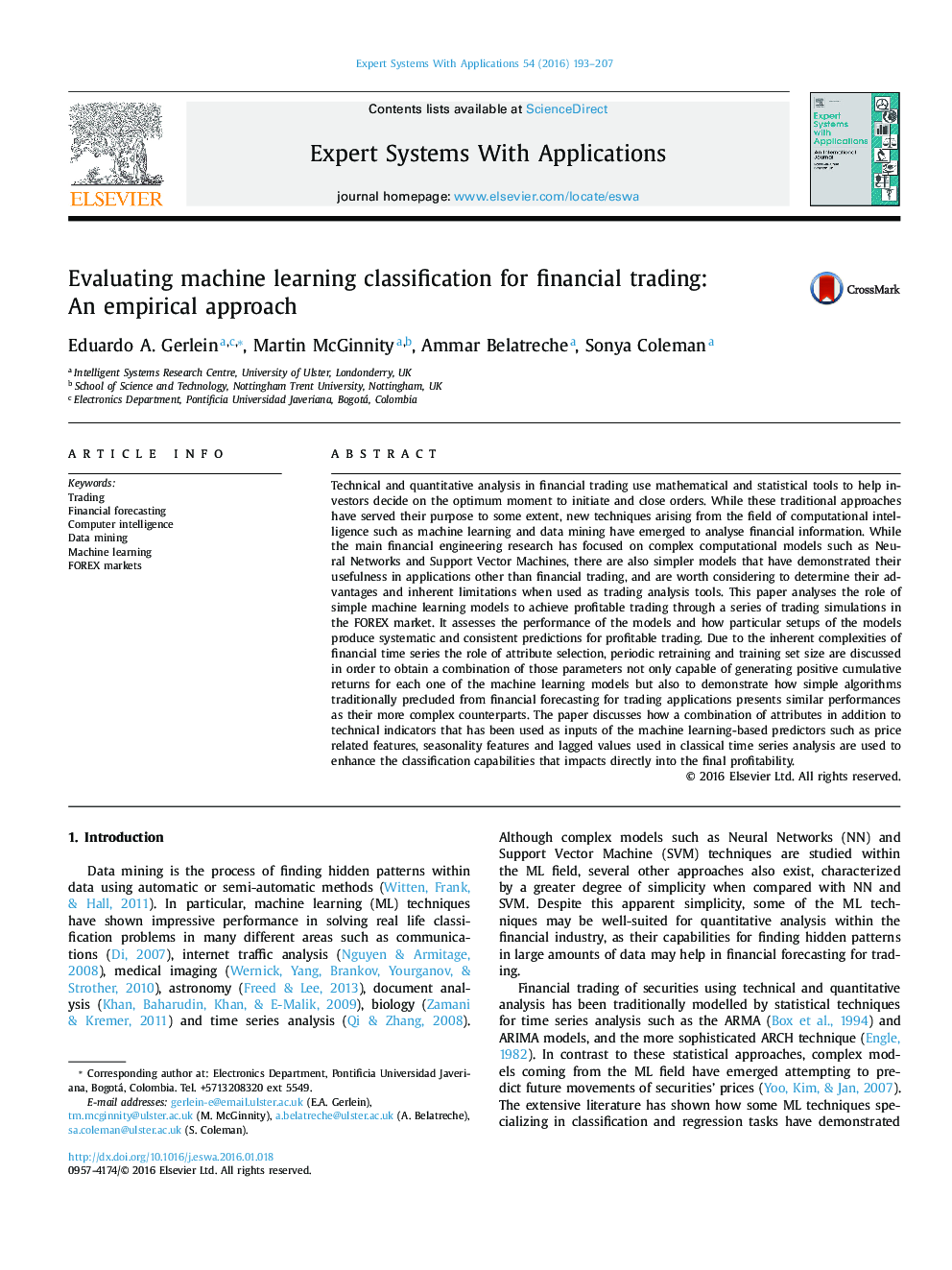| کد مقاله | کد نشریه | سال انتشار | مقاله انگلیسی | نسخه تمام متن |
|---|---|---|---|---|
| 383266 | 660814 | 2016 | 15 صفحه PDF | دانلود رایگان |
• Low-complexity machine learning models are used trade in the FOREX market.
• A six year trading simulation in USDJPY, EURGPB and EURUSD are assessed.
• Periodic retraining, number of attributes and retraining set size are varied and studied.
• Middle range accuracies are obtained with high financial returns in the long term.
Technical and quantitative analysis in financial trading use mathematical and statistical tools to help investors decide on the optimum moment to initiate and close orders. While these traditional approaches have served their purpose to some extent, new techniques arising from the field of computational intelligence such as machine learning and data mining have emerged to analyse financial information. While the main financial engineering research has focused on complex computational models such as Neural Networks and Support Vector Machines, there are also simpler models that have demonstrated their usefulness in applications other than financial trading, and are worth considering to determine their advantages and inherent limitations when used as trading analysis tools. This paper analyses the role of simple machine learning models to achieve profitable trading through a series of trading simulations in the FOREX market. It assesses the performance of the models and how particular setups of the models produce systematic and consistent predictions for profitable trading. Due to the inherent complexities of financial time series the role of attribute selection, periodic retraining and training set size are discussed in order to obtain a combination of those parameters not only capable of generating positive cumulative returns for each one of the machine learning models but also to demonstrate how simple algorithms traditionally precluded from financial forecasting for trading applications presents similar performances as their more complex counterparts. The paper discusses how a combination of attributes in addition to technical indicators that has been used as inputs of the machine learning-based predictors such as price related features, seasonality features and lagged values used in classical time series analysis are used to enhance the classification capabilities that impacts directly into the final profitability.
Journal: Expert Systems with Applications - Volume 54, 15 July 2016, Pages 193–207
